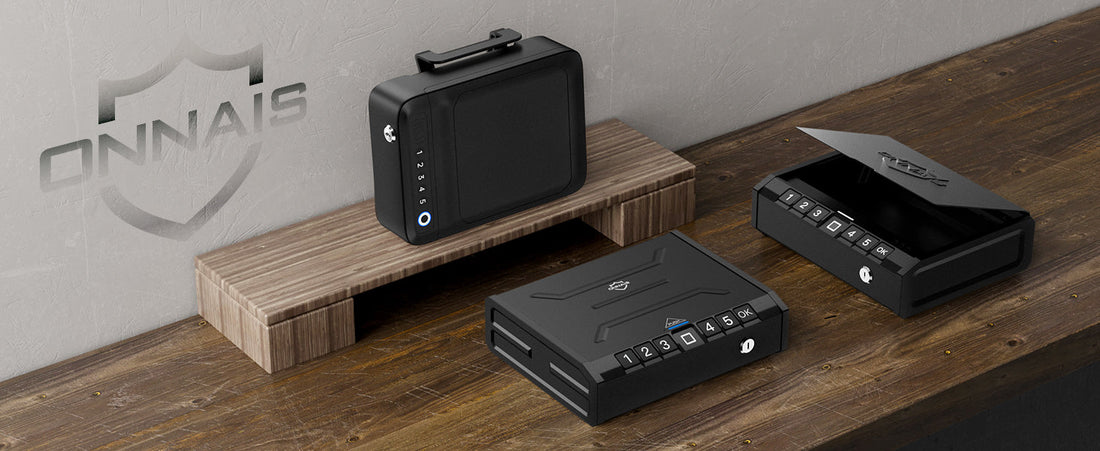The Ultimate Pistol Safe Buying Guide: Secure Your Firearm with Confidence
This guide will help you navigate the critical features and top products in the pistol safe market. Whether you’re a new gun owner or upgrading your security, this guide cuts through the noise to deliver actionable advice.

Why You Need a Pistol Safe
-
Unauthorized access (children, thieves)
-
Legal liability in negligent storage cases
-
Damage from environmental hazards
Key Features to Evaluate
1. Material & Build Quality
Choosing the right safe involves a detailed assessment of its construction, locking mechanism, size, and protective capabilities.
- Steel Thickness: This is paramount. Opt for 12–14-gauge steel for robust durability. The lower the gauge number, the thicker and stronger the steel. A 10-gauge safe offers even greater protection. Avoid safes made from thin, flimsy sheet metal (16-gauge or higher) or plastic, as these are highly vulnerable to prying, cutting, or drilling. Pay attention to both the door and body thickness.- Door and Frame Construction: Look for features like pry-resistant doors with recessed edges that fit snugly into the safe body, making it difficult for tools to gain leverage.
- Exterior Coatings: A durable finish is crucial for longevity. Powder-coated or zinc-plated finishes provide excellent resistance against corrosion, rust, and scratches, ensuring the safe maintains its appearance and protective qualities over time.
- Interior Lining: While not directly for security, a soft foam or felt-lined interior prevents scratches and dings to your firearm's finish, and in some cases, can offer minimal vibration dampening.
2. Locking Mechanisms
|
Type
|
Pros
|
Cons |
| Biometric | Lightning-fast access (<2 sec) | Batteries may die; higher cost |
| Electronic | Reliable; backup keys included | Slower than biometric |
| Mechanical | No batteries; EMP-proof | Access speed slower |
| RFID | Keyless entry via fob/card | Risk of signal cloning |
3. Capacity & Dimensions
- Measure your firearm with attachments (lights, optics).
- Choose 1–2 extra inches for future upgrades.
- Compact models fit in drawers; larger ones bolt to furniture.
4. Security Certifications
- UL 1037 (anti-theft) or DOJ-approved (California standards) ensure rigorous testing.
- Other Certifications: Some safes may also meet ASTM standards for certain features or have certifications from other state agencies, providing additional assurance.
5. Installation & Portability
- Pre-drilled holes + steel cable for temporary mounting.
- Bolt-down kits (essential for permanent home/vehicle use).
6. Fire/Water Resistance
- Minimum 30-minute fire rating at 1,200°F protects documents/metal.
- Water-resistant seals guard against humidity/floods.
Top Pistol Safe Picks (2025)
1. Fort Knox PB1 (Mechanical)
- Pros: 10-gauge steel, Simplex lock (1M+ combos), no batteries.
- Cons: Heavy (55 lbs), slower access.
- Best for: Bedside reliability.
2. Vaultek VT20i (Biometric)
- Pros: Bluetooth alerts, impact sensors, 16G steel.
- Cons: Premium pricing.
- Best for: Tech-savvy users.
3. ONNAIS Iron Se (Biometric)
- Pros: Pry-resistant, budget-friendly.
- Cons: Limited interior space.
- Best for: Compact, cost-effective security.

4. ONNAIS Alloy Se (Biometric)
- Pros: RFID, Card Pry-resistant, budget-friendly.
- Cons: Limited interior space.
- Best for: Portable, cost-effective security.

Usage & Maintenance Tips for Long-Term Security
- Installation: Bolt down ALL safes—cables are delay tactics, not theft-proofing.
- Batteries: Replace annually in electronic locks; keep mechanical keys off-site.
- Drills: Practice openings monthly to ensure muscle memory during emergencies.
- Cleaning: Wipe interiors with silicone cloth to prevent rust.
Final Checklist Before Buying
☑️ Certified security (UL/DOJ)
☑️ Steel gauge≤14
☑️ Backup entry (keys/override codes)
☑️ Fits firearm + accessories
☑️ Mounting options match your use case
☑️ Access Speed
☑️ Environmental Protection
A pistol safe is your last line of defense—prioritize robust construction, intuitive access, and third-party testing. Invest wisely to ensure your firearm is truly secure.
Stay safe, stay responsible.








